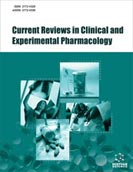Abstract
Farnesoid X receptor (FXR) was identified as an orphan nuclear receptor resembling the steroid receptor in the late ’90s. Activation of FXR is a crucial step in many physiological functions of the liver. A vital role of FXR is impacting the amount of bile acids in the hepatocytes, which it performs by reducing bile acid synthesis, stimulating the bile salt export pump, and inhibiting its enterohepatic circulation, thus protecting the hepatocytes against the toxic accumulation of bile acids. Furthermore, FXR mediates bile acid biotransformation in the intestine, liver regeneration, glucose hemostasis, and lipid metabolism. In this review, we first discuss the mechanisms of the disparate pleiotropic actions of FXR agonists. We then delve into the pharmacokinetics of Obeticholic acid (OCA), the first-in-class selective, potent FXR agonist. We additionally discuss the clinical journey of OCA in humans, its current evidence in various human diseases, and its plausible roles in the future.
Keywords: FXR, liver metabolism, bile acids, obeticholic acid, FXR agonist, pharmacokinetics.
[http://dx.doi.org/10.1021/jm0002127] [PMID: 10956205]
[http://dx.doi.org/10.3389/fphar.2020.01247]
[http://dx.doi.org/10.1021/jm8014124] [PMID: 19159286]
[http://dx.doi.org/10.1016/j.clinre.2021.101675] [PMID: 33722778]
[http://dx.doi.org/10.1172/JCI42846] [PMID: 21123943]
[http://dx.doi.org/10.1016/j.envint.2019.105422]
[http://dx.doi.org/10.1002/hep.25905] [PMID: 22711662]
[http://dx.doi.org/10.1210/en.2004-0965] [PMID: 15564327]
[http://dx.doi.org/10.1074/jbc.M314322200] [PMID: 15047713]
[http://dx.doi.org/10.1210/me.2002-0120] [PMID: 12554753]
[http://dx.doi.org/10.1016/j.febslet.2007.11.015] [PMID: 18023284]
[http://dx.doi.org/10.1194/jlr.M400191-JLR200] [PMID: 15314100]
[http://dx.doi.org/10.1161/ATVBAHA.118.311122] [PMID: 30354208]
[http://dx.doi.org/10.1194/jlr.M070888] [PMID: 27940481]
[http://dx.doi.org/10.2147/HMER.S91709] [PMID: 27621676]
[http://dx.doi.org/10.1016/j.jhep.2020.07.028] [PMID: 32717289]
[http://dx.doi.org/10.1002/hep4.1518] [PMID: 32923836]
[http://dx.doi.org/10.1056/NEJMoa1509840] [PMID: 27532829]
[http://dx.doi.org/10.1053/j.gastro.2013.05.042] [PMID: 23727264]
[http://dx.doi.org/10.1016/S0140-6736(14)61933-4] [PMID: 25468160]
[http://dx.doi.org/10.1016/j.cgh.2019.09.050] [PMID: 31606455]
[http://dx.doi.org/10.1053/j.gastro.2014.12.005] [PMID: 25500425]
[http://dx.doi.org/10.1016/S2468-1253(19)30094-9] [PMID: 30922873]
[http://dx.doi.org/10.1016/j.jhep.2020.02.033] [PMID: 32165251]
[http://dx.doi.org/10.1053/j.gastro.2020.01.052] [PMID: 32061595]
[http://dx.doi.org/10.1016/S0140-6736(19)33041-7] [PMID: 31813633]
[http://dx.doi.org/10.1007/s11901-018-0425-7] [PMID: 31380156]
[http://dx.doi.org/10.1080/17474124.2020.1748498] [PMID: 32241197]
[http://dx.doi.org/10.1016/S1262-3636(08)74605-6] [PMID: 19195631]
[http://dx.doi.org/10.1016/j.cct.2019.06.017] [PMID: 31260793]































